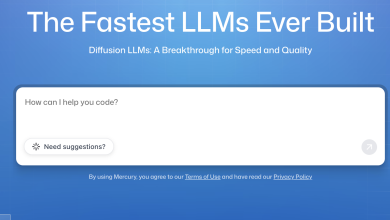There is no doubt that Artificial Intelligence (AI) is transforming the way organisations are operating. Capabilities like predictive analytics, natural language processing and computer vision continue to grow exponentially, and the opportunities that these capabilities provide to inform business decision-making are exciting. Yet, there are also lots of concerns around AI.
As we look to the future and evolving work practices, it is essential that the people behind organisations – both employees and stakeholders – do not feel as though AI technology is synonymous with mass unemployment. Instead, we need to recognise and celebrate AI as a colleague, understanding how it can augment employees’ work.
The power of human intelligence
What must be understood is that developers of AI still have a long way to go before they can become increasingly sophisticated and replace the incredible complexity of the human mind. Despite the media hype, experts predict that it will take many decades to achieve “General AI” – a type of AI on par with human intelligence.
AI solutions being implemented across workforces today are known as “narrow AI”. This type of technology is capable of handling mass amounts of data and performing coherent analytics in a matter of seconds, but is nowhere near replacing humans. There are countless tasks that humans can do in a fraction of a second which machines cannot; the tasks can be as simple as identifying differently shaped objects.
Certainly for the foreseeable future, focusing on AI as a threat to humans and a technology that can replace their jobs is counterproductive, and incorrectly assumes that AI and humans have the same skills and abilities. The impact of AI is currently apparent on task level more than on job level. AI may impact a specific task that an employee performs but humans are intuitive and emotionally intelligent, which enables us to interpret situations in ways that no machine can.
For example, AI-driven teaching programmes are becoming increasingly adopted within the classroom, due to their capabilities in enhancing personalised learning and providing teachers with real-time data on student progression. Yet, effective teaching cannot rely on technology alone – it is built on emotional connection, strong staff-student relationships, and inspiring children to want to learn.
Ultimately, organisations are about people and always will be. Their decisions must be cognisant of this – whether it’s employees, investors or students, people are at every touchpoint. To succeed, an organisation must therefore ensure it is guided by emotional intelligence. It is far more productive to talk about how AI can work with humans and what kind of skills people should nurture to benefit from the advancement of AI and machines, than to focus on AI as a threat.
Increasing productivity
What is important to note is that cohesion between AI and human capabilities offers exciting prospects for workforces.
If employees are able to view AI as a colleague, supporting them in their job roles rather than replacing them, there would be incredible potential for the technology to considerably enhance productivity. AI can take on time-consuming and repetitive work, freeing up the workforce for more important and engaging tasks.
A prime example is the way in which AI is improving our understanding of life-threatening health conditions, through early disease diagnosis. In 2021, researchers at HBKU utilised AI algorithms to detect both high blood pressure and the chances of suffering from cardiovascular disease in patients. Here is a clear example of how AI can support health professionals in tackling conditions: cutting down the time spent trying to diagnose patients and freeing healthcare specialists up to create personalised treatment plans adapted to individual patients.
As in the case highlighted above, AI does not eliminate the role of the healthcare profession but ensures they are informed correctly to make the most suitable and time-efficient recommendations and improve the service they offer.
The necessity for upskilling
A further benefit of leveraging AI is the opportunity it offers to ensure employees feel driven and can progress in their careers. In Qatar and elsewhere around the globe, many employees are qualified beyond the remit of their jobs. Likewise in the UK, figures from the National Office of Statistics in 2019 found nearly a third (31 per cent) of graduates were overqualified for their position (ONS, 2019). AI provides an interesting opportunity to address this issue through upskilling.
As AI technology advances, there will be an increasing necessity for humans to apply and improve their critical thinking and analytical skills. This not only provides an opportunity for employees to feel stretched in their roles, but to build their skillset even further.
For example, if a business requires speech-to-text transcription, it is undeniable that machines can complete these tasks far quicker than can be done manually by humans. Yet, it is still essential for humans to check the accuracy of the transcription. In this case, an employee’s reduced involvement in the transcription process provides a perfect opportunity to use their time elsewhere, like learning new languages that will enable them to assess the accuracy of a wider set of transcriptions and potentially even expand their businesses offering.
By reducing the number of tasks that workforces need to do manually, AI can also ensure employees have more time to learn and grow their skillset through training and learning programmes.
Ultimately, these new opportunities for growth can act as a motivator for employees, helping them to feel more valued in their roles and boosting morale.
AI as a supportive mechanism
AI has immense potential to transform operational efficiency. Yet, what’s essential for workforces to understand is the way in which the technology supports them to excel in their roles, and ultimately helps organisations achieve greater endeavours. AI should not be feared but seen as a facilitator of growth, creating a shift towards a more learning-orientated future of work that benefits both the business and the individuals within it.




